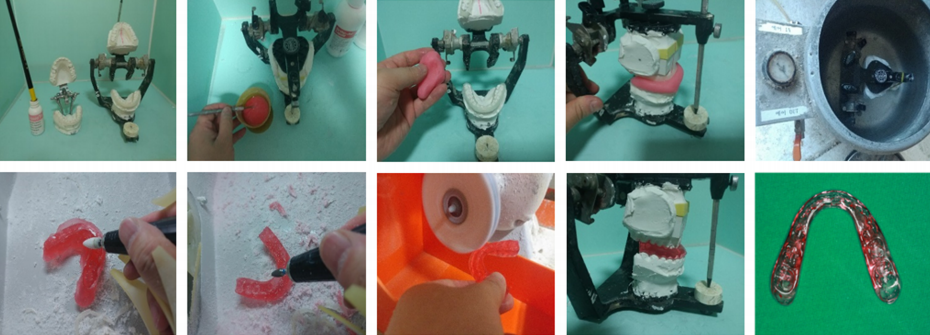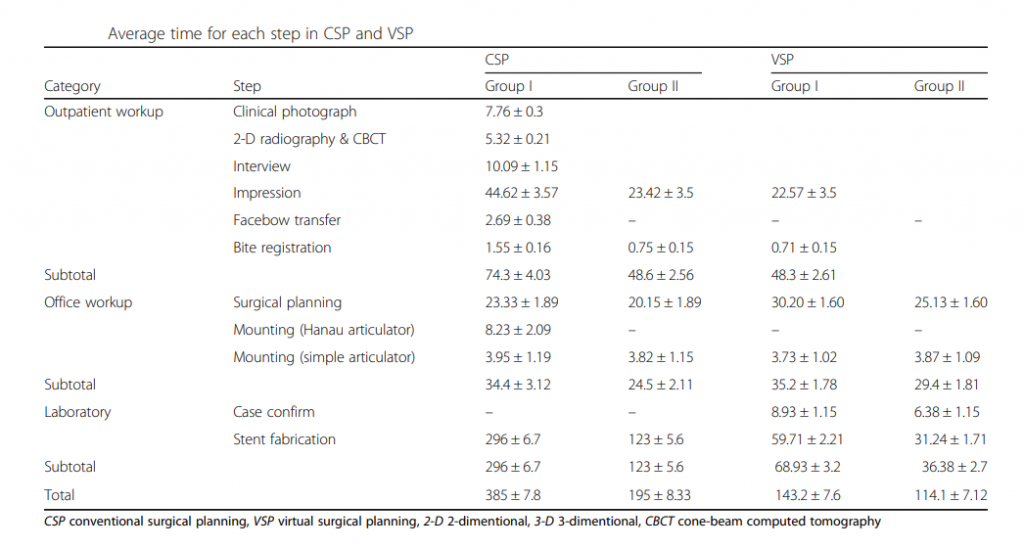In ‘Comparison of time and cost between conventional surgical planning and virtual surgical planning in orthognathic surgery in Korea,’ authors Si-Yeon Park, Dae-Seok Hwang, Jae-Min Song, and Uk-Kuy Kim explore the topics of 3D printing in the medical realm, but in regards to a very specific type of procedure. The study involved patients undergoing surgery of the jaw at the Pusan National University Dental Hospital from December 2017 to August 2018.
Intense planning is required for orthognathic surgery, with ‘accurate and delicate’ patient data analysis required. Traditional analysis is detailed and arduous, while virtual surgical planning (VSP) and 3D analysis involve:
- Analyzing skeletal deformities
- Performing virtual surgery
- Fabricating a surgical stent
Patients involved in the study had received Le Fort I osteotomy and bilateral sagittal split osteotomy (LFI+BSSO) or only bilateral sagittal split osteotomy (BSSO). Preoperative steps were taken at the hospital, with surgical planning performed through conventional and virtual methods. Patients were divided into two groups:
- Group One – patients who underwent LFI and BSSO regardless of genioplasty
- Group Two – patients who had undergone BSSO regardless of genioplasty
All patients underwent radiography. For Group One, the patients required maxillary and mandibular impression, with facebow transfer required for conventional analysis. For Group Two, the patients needed one pair of maxillary and mandibular impressions. The study included 47 patients, all of whom underwent surgery performed by one surgeon.
While conventional planning may often be responsible for errors, along with diminishing accuracy, virtual planning offers all the opposite benefits, preventing mistakes and improving precision and accuracy. Many surgeons are turning to VSP because of the many advantages outweighing more traditional techniques.
Along with being more accurate, VSP is also much faster; however, affordability—while theorized to offer a great advantage—did not factor in during this study. Virtual planning was found to be more expensive because the stent was outsourced for fabrication. The surgeon involved in the study still expects that VSP would be more cost-effective when all factors are considered—and especially in the amount of time saved.
“In this study, each step of VSP and CSP was not performed in the same place. Since it was performed separately, it is possible that its accuracy and cost-effectiveness decreased when it was processed in different laboratories,” concluded the researchers. “As a result, if the hospital is well equipped with software and hardware, each step of VSP and CSP can be performed in the same hospital and it will increase the cost-effectiveness and accuracy of the process by reducing errors and extra charges from the outsourced laboratory.
“With its high accuracy and time efficiency, VSP is the future for orthognathic surgery planning. As the VSP program continues to evolve, research on how to reduce the work time and cost for each step should be done.”
3D printing has made enormous impacts in the vast field of medicine, but especially the world of 3D models and surgical pre-planning. This spans so many different types of procedures meant to study, diagnose, and treat issues such as prostate cancer, knee replacement, and even prevention of heart-valve complications.
What do you think of this news? Let us know your thoughts! Join the discussion of this and other 3D printing topics at 3DPrintBoard.com.
[Source / Image: ‘Comparison of time and cost between conventional surgical planning and virtual surgical planning in orthognathic surgery in Korea’]Subscribe to Our Email Newsletter
Stay up-to-date on all the latest news from the 3D printing industry and receive information and offers from third party vendors.
You May Also Like
Profiling a Construction 3D Printing Pioneer: US Army Corps of Engineers’ Megan Kreiger
The world of construction 3D printing is still so new that the true experts can probably be counted on two hands. Among them is Megan Kreiger, Portfolio Manager of Additive...
US Army Corps of Engineers Taps Lincoln Electric & Eaton for Largest 3D Printed US Civil Works Part
The Soo Locks sit on the US-Canadian border, enabling maritime travel between Lake Superior and Lake Huron, from which ships can reach the rest of the Great Lakes. Crafts carrying...
Construction 3D Printing CEO Reflects on Being Female in Construction
Natalie Wadley, CEO of ChangeMaker3D, could hear the words of her daughter sitting next to her resounding in her head. “Mum, MUM, you’ve won!” Wadley had just won the prestigious...
1Print to Commercialize 3D Printed Coastal Resilience Solutions
1Print, a company that specializes in deploying additive construction (AC) for infrastructure projects, has entered an agreement with the University of Miami (UM) to accelerate commercialization of the SEAHIVE shoreline...


































